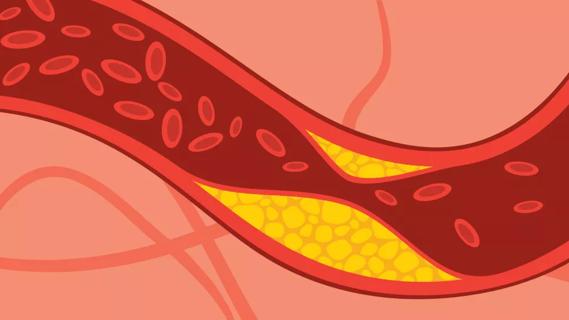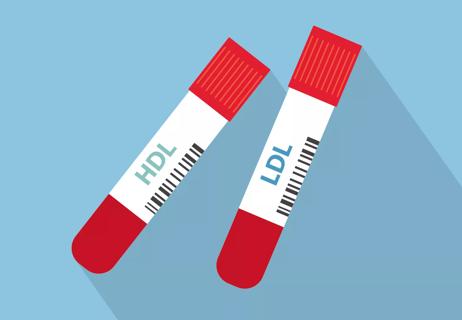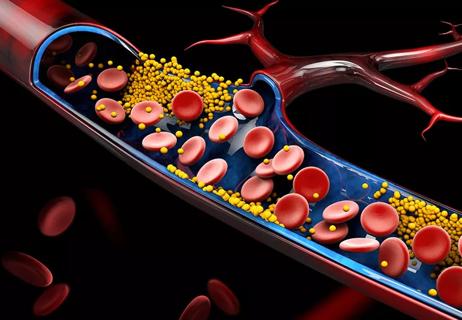An expert explains the link

When we think about cholesterol, we often think about our heart. And while there’s good reason for that, higher levels of cholesterol can also have an effect on your body that goes beyond your cardiovascular system.
Advertisement
Cleveland Clinic is a non-profit academic medical center. Advertising on our site helps support our mission. We do not endorse non-Cleveland Clinic products or services. Policy
It might surprise you to learn that higher levels of cholesterol can actually lead to issues with your eyes, including yellow deposits around your eyelids. To learn more about this condition and other ways your eyes can be affected by cholesterol levels, we spoke with ophthalmologist Nicole Bajic, MD.
There are a few ways in which cholesterol deposits develop around your eyes, and while they all manifest in different ways, they all come down to the same cause: high levels of cholesterol.
“Cholesterol is a type of lipid that’s a key ingredient in making steroid hormones, vitamin D and bile salts, which help us break down fat in our gut,” explains Dr. Bajic. “Our bodies have cholesterol moving through our bodies via lipoproteins, including high-density lipoprotein (HDL), which is the ‘good’ kind of cholesterol, and low-density lipoprotein (LDL), which is the ‘bad’ kind. And when your body’s balance is off, you can develop those fatty deposits.”
The most common way that cholesterol can affect your eyes is the presence of xanthelasma, small, yellowish fatty deposits in the skin around your eyes. Specifically, the deposits typically form in the eyelids. “Most often, we see it in the upper eyelids and the inner part of the eyelids closest to the nose,” Dr. Bajic notes.
Advertisement
“We’re not exactly sure why it occurs in some people with high cholesterol and not others,” says Dr. Bajic, “but when you see it on someone who does not have a known history of high cholesterol, it is a good idea to get that checked as there is roughly a 50% chance they have it.”
Some of the risk factors for xanthelasma include:
For the most part, Dr. Bajic says xanthelasma isn’t painful. “It’s mostly a cosmetic issue, but if these deposits grow, they can cause significant distress,” she stresses.
Arcus senilis, also called corneal arcus, is a condition in which a white or grayish ring or halo develops in the periphery of the cornea, the clear layer of your eye that protects your iris. “Think of the cornea as the windshield of the eye,” says Dr. Bajic.
That ring, she says, is a result of cholesterol deposits in your eye. While the ring itself doesn’t impair your vision, it’s still a sign of higher cholesterol levels in your body.
More concerning, Dr. Bajic says, is the development of a Hollenhorst plaque, a blockage in one of the blood vessels within your eye that can lead to more severe consequences for your vision.
When cholesterol reaches high levels in your body, it can lead to atherosclerosis, a condition in which plaque builds up on the walls of your blood vessels and restricts the flow of blood.
“Those little pieces of fatty plaque can break off, travel through the body and get stuck in small blood vessels,” Dr. Bajic says. “That can block the blood flow to tissue, and that tissue can die.”
In this case, the plaque breaks off and blocks a blood vessel in your eye’s retina. “This can cause a branch retinal artery occlusion, which can result in trouble with your vision or even loss of vision,” she says.
While these issues affect your eyes, it’s important to remember they’re a symptom of a larger problem: high cholesterol. “One of the best ways to prevent and relieve these issues is to start a low-fat diet, including eating fewer processed foods,” says Dr. Bajic.
While you should always consult your healthcare provider for a nutrition plan that’s right for your specific health, the Mediterranean Diet is a good place to start. With a mix of fiber, protein and healthy fats, it can go a long way to improving your overall health.
Dr. Bajic notes that in some cases, your healthcare provider may request you begin a medication regimen to help lower your cholesterol levels. Some examples include:
Advertisement
In some cases of xanthelasma, Dr. Bajic says cosmetic surgery may be suggested for the removal of fatty deposits. But the downside is scarring.
“Any time you cut the skin, you can get scarring,” she says, “and it can also depend on how large the deposits are and how many of them there are.”
Other laser therapies might also be an option but, you’ll need to talk to your healthcare provider about that.
Because these issues with your eyes are symptoms of a larger issue with your health, you shouldn’t ignore them, even if they don’t cause pain. “As soon as you notice them, consult your healthcare provider,” says Dr. Bajic. “The sooner you do, the sooner you can work on lowering your cholesterol and optimize your health.”
Advertisement
Learn more about our editorial process.
Advertisement

LDL cholesterol and lipoprotein (a) cholesterol are more likely to stick to your arteries and lead to dangerous heart events

If you’re eating more than one egg per day, you might want to cut back

Your family tree may increase your risk of high cholesterol and heart disease

Understanding the difference between ‘lousy’ and ‘healthy’ cholesterol can help you keep your heart healthy

Spoiler alert: The potential benefits of drinking alcohol may be a tad overstated

The right lifestyle changes can make all the difference

Not all cholesterol-rich foods are bad for you

The short answer from a cardiologist

Type 2 diabetes isn’t inevitable with these dietary changes

Applying a hot or cold compress can help with pain